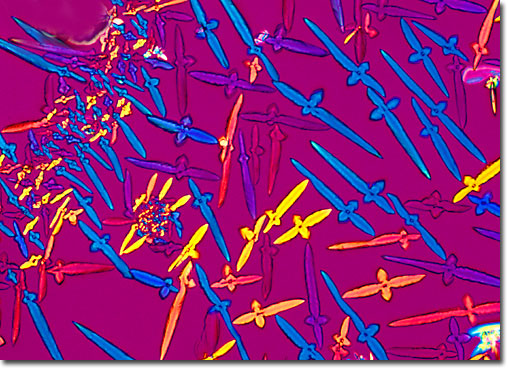Retinol (Vitamin A)

View a second image of vitamin A.
|
The first nutritional deficiency disease to be identified and studied was night blindness. Ancient cultures recognized this and utilized cooked liver as both a topical and systemic cure for this malady. Retinol was first identified in 1920 and, being the first vitamin, was named vitamin A under the alphabetical nomenclature system. Its high concentration in the liver is due to the fat-soluble nature of this polyene biochemical, although because of the storage mechanism, excessive doses of vitamin A can be very toxic. The most critical biochemical to vision is retinal, an aldehyde that can be synthesized in vivo from retinol by NAD oxidation. Retinal exists in several isomeric states that are modulated by photon irridation and are very important in the conversion of light waves into vision. The most common source of vitamin A is liver, but many plants contain beta-carotene, which is metabolically converted to vitamin A. Symptoms associated with a deficiency of vitamin A are night blindness, changes in the eyes, poor bone growth, weak tooth enamel, slow growth, and dry skin. |
© 1995-2025 by Michael W. Davidson and The Florida State University. All Rights Reserved. No images, graphics, software, scripts, or applets may be reproduced or used in any manner without permission from the copyright holders. Use of this website means you agree to all of the Legal Terms and Conditions set forth by the owners.
This website is maintained by our
|